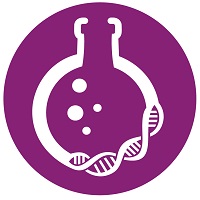Back
Bioanalytics – Chemical
Session: Symposium: Sample Challenges, Yet Opportunities (CE)
Use of Volumetric Absorptive Microsampling in Remote / Hybrid Clinical Trials
Tuesday, October 18, 2022
9:30 AM – 10:00 AM ET
Location: 253 A

James Rudge, PhD
Technical Director
Neoteryx, Part of the Trajan Family, United Kingdom
Speaker(s)
The Covid-19 pandemic brought into sharp focus the need to transition clinical trials from the clinic site to remote settings, particularly the challenge of safely obtaining high-quality blood samples from study participants during active government-mandated lockdowns. One option was to provide a specimen collection pack, designed to enable volumetric absorptive microsampling via capillary blood collection, to consenting trial participants at non-clinical locations. Once the specimen is collected, it is conveniently returned by mailer pouch, drying in transit at ambient temperature. Using this approach, the National Institutes of Health (NIH) conducted a large serological study (n=~10000) of remote study participants across the US. Participation rate was high (approximately 9000 samples were returned) and most specimens were of sufficient quality for analysis with assays validated for the sampling scheme. Based on this methodology, NIH researchers were able to predict a seroprevalence rate of 4.8 x undiagnosed cases of Covid-19 for every reported diagnosed case.
There are great benefits to remote sampling, including a significant reduction in trial costs, easier patient enrollment, and improved trial compliancy. Nonetheless, there are some challenges to be considered with remote sampling, such as control of specimen identity, equivalent data between dried & wet matrices and reduced onsite contact with patients. Bridging studies have demonstrated analytical equivalence between traditionally collected liquid specimens and dried blood microspecimens for the testing selected.
These measures play into hybrid clinical trial designs, where patients can be given the option to visit the trial site in person, participate remotely, or via a mix of both approaches, dependent on the needs of the study and the participant preferences. In short, microsampling increases the likelihood of the success of remote and /or hybrid trials by enabling self-collection or assisted collection without the need for phlebotomy and by making the patients’ preferences central to the clinical trial design.
There are great benefits to remote sampling, including a significant reduction in trial costs, easier patient enrollment, and improved trial compliancy. Nonetheless, there are some challenges to be considered with remote sampling, such as control of specimen identity, equivalent data between dried & wet matrices and reduced onsite contact with patients. Bridging studies have demonstrated analytical equivalence between traditionally collected liquid specimens and dried blood microspecimens for the testing selected.
These measures play into hybrid clinical trial designs, where patients can be given the option to visit the trial site in person, participate remotely, or via a mix of both approaches, dependent on the needs of the study and the participant preferences. In short, microsampling increases the likelihood of the success of remote and /or hybrid trials by enabling self-collection or assisted collection without the need for phlebotomy and by making the patients’ preferences central to the clinical trial design.
Learning Objectives:
- An understanding of what volumetric absorptive microsampling is.
- How self or assisted sample collection can negate the need for phlebotomy allowing for samples to collected at home.
- Volumetric absorptive microsampling correlates well with standard venous collection, for many analytes, as long as appropriate validation is conducted
- Examples of studies where volumetric absorptive microsampling was employed
- Advantages and disadvantages of remote collection in terms of sample quality and participant experience

